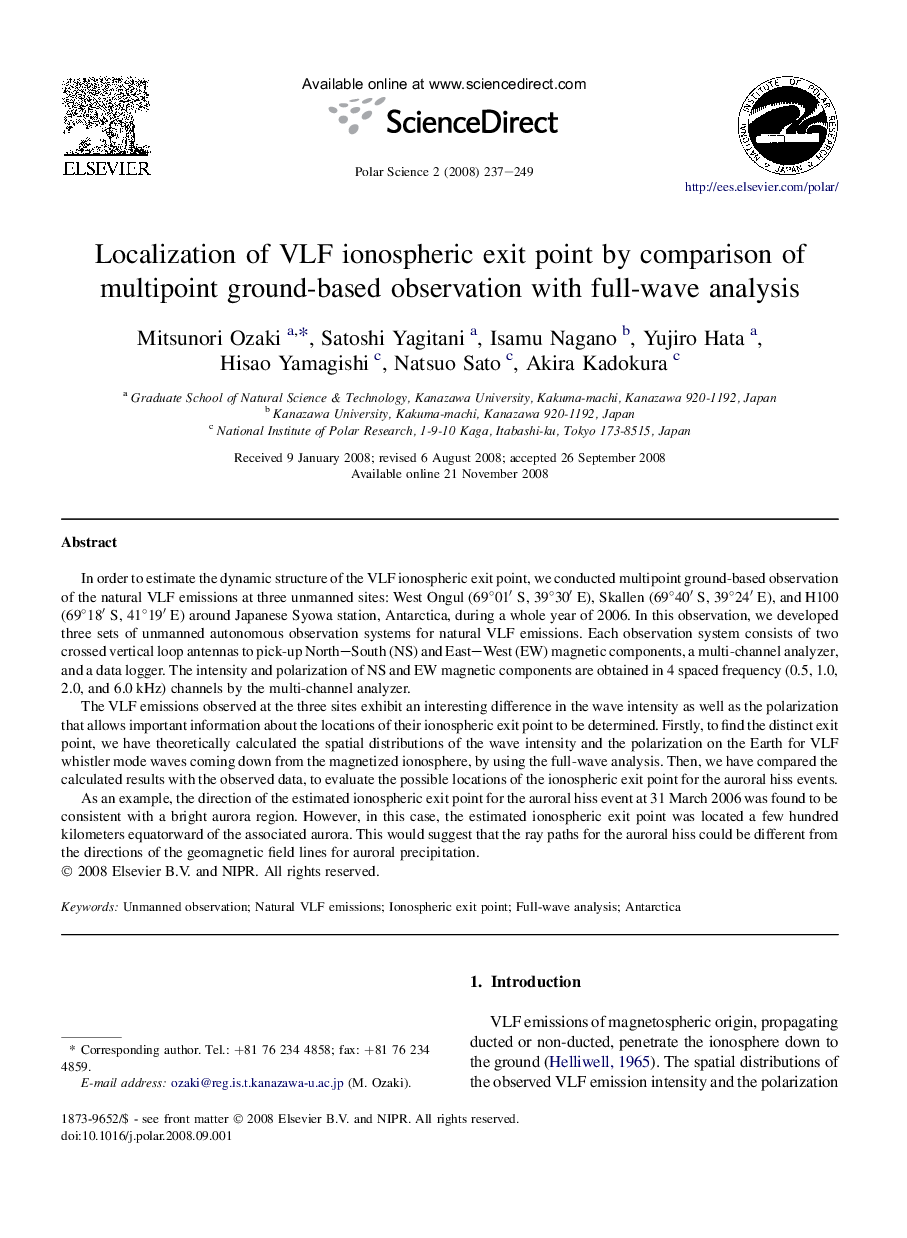| کد مقاله | کد نشریه | سال انتشار | مقاله انگلیسی | نسخه تمام متن |
|---|---|---|---|---|
| 4683439 | 1349309 | 2008 | 13 صفحه PDF | دانلود رایگان |

In order to estimate the dynamic structure of the VLF ionospheric exit point, we conducted multipoint ground-based observation of the natural VLF emissions at three unmanned sites: West Ongul (69°01′ S, 39°30′ E), Skallen (69°40′ S, 39°24′ E), and H100 (69°18′ S, 41°19′ E) around Japanese Syowa station, Antarctica, during a whole year of 2006. In this observation, we developed three sets of unmanned autonomous observation systems for natural VLF emissions. Each observation system consists of two crossed vertical loop antennas to pick-up North–South (NS) and East–West (EW) magnetic components, a multi-channel analyzer, and a data logger. The intensity and polarization of NS and EW magnetic components are obtained in 4 spaced frequency (0.5, 1.0, 2.0, and 6.0 kHz) channels by the multi-channel analyzer.The VLF emissions observed at the three sites exhibit an interesting difference in the wave intensity as well as the polarization that allows important information about the locations of their ionospheric exit point to be determined. Firstly, to find the distinct exit point, we have theoretically calculated the spatial distributions of the wave intensity and the polarization on the Earth for VLF whistler mode waves coming down from the magnetized ionosphere, by using the full-wave analysis. Then, we have compared the calculated results with the observed data, to evaluate the possible locations of the ionospheric exit point for the auroral hiss events.As an example, the direction of the estimated ionospheric exit point for the auroral hiss event at 31 March 2006 was found to be consistent with a bright aurora region. However, in this case, the estimated ionospheric exit point was located a few hundred kilometers equatorward of the associated aurora. This would suggest that the ray paths for the auroral hiss could be different from the directions of the geomagnetic field lines for auroral precipitation.
Journal: Polar Science - Volume 2, Issue 4, December 2008, Pages 237–249